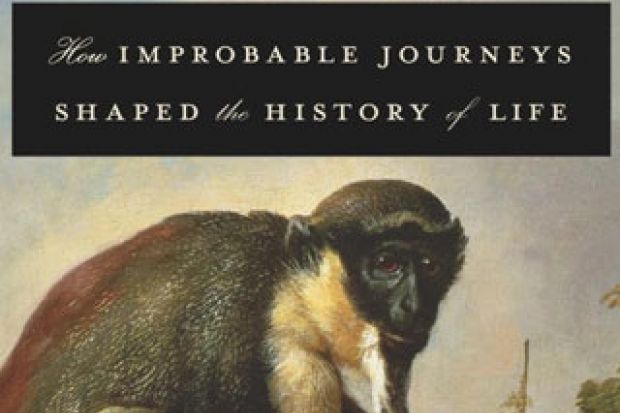For decades an academic war has been raging over the distribution of plants and animals across the planet. In one camp, there are those who believe dispersal came first and separation came second, as a consequence of continental drift and natural land barriers (known as the vicariance hypothesis). In the other, there are those who see natural history as a more chaotic process, arguing that improbable oceanic crossings and long-distance colonisations have played a vital role in shaping our world. But it seems we are now in the middle of a revolution. Thanks mainly to the invention of the polymerase chain reaction (PCR) and the subsequent flurry of molecular data that followed, we can now date evolutionary trees with more confidence, and the evidence seems to support that, in some cases, the smallest (and most improbable) chance events have changed the course of evolutionary history.
Alan de Queiroz starts where so many evolutionary biologists do, with the musings of Charles Darwin. Darwin himself had problems explaining some of the distribution patterns of organisms he observed. He spent countless hours on unglamorous experiments that aimed to test the tendency of certain plants and animals to survive desiccation and prolonged exposure to saline conditions, in a bid to determine whether ocean crossings were possible.
His experiments consisted of dangling disembodied duck’s feet into aquaria to see if hatchling snails would attach, and force-feeding seeds to fish and birds in order to attempt to retrieve viable seeds from their droppings. As mad as these experiments may sound today, he made important discoveries that shaped his views of dispersal – the improbable is possible. However, with the discovery of continental drift in the early 1960s, many biogeographers saw no need for such whimsical tales of long-distance dispersal. Until, that is, some plants and animals kept cropping up in places where they had no business being.
From these simple experimental beginnings, de Queiroz gives the reader a detailed rundown of more recent advances, namely in the field of molecular biology, and starts to unravel the evidence for long-distance dispersal. He delights in telling the tales of extraordinary journeys by unlikely critters – snakes, frogs, flightless birds and even monkeys – and with these tales he reveals “a world shaped by miracles”. He adds new dimensions to the story along the way by introducing colourful characters who have made important contributions to an ever-changing field. However, he is also continually honest, acknowledging gaps in the data and omissions where necessary: “Molecular clocks are easy to find fault with and hard to love”.
“The improbable, the rare, the mysterious and the miraculous” are not words that a scientist is often brave enough to utter, but these are the words at the foundation of de Queiroz’s argument. Evolutionary biology is a game of chances, and given enough time and opportunity, “the improbable and miraculous” becomes “the likely and reasonable”.
I will end with a somewhat embarrassing confession. My doctoral thesis, entitled “Understanding the evolutionary ecology of dispersal”, tackled a slightly different question from that of de Queiroz. I can honestly say that I do not fully understand the evolutionary ecology of dispersal. Moreover, I am rather relieved to discover there are few people who do, or at least, few people who can agree completely on the subject. But we can now be more confident in our assumption that, given the smallest chance of a successful dispersal event, nature will take advantage and reap the benefits. And it seems, according to de Queiroz, we can now with some confidence answer one of biology’s most taxing questions: “Why did the monkey cross the ocean? Well, to get to the other side, of course”.
The Monkey’s Voyage: How Improbable Journeys Shaped the History of Life
By Alan de Queiroz
Basic Books, 368pp, £18.99 and £15.99
ISBN 9780465020515 and 069767 (e-book)
Published 7 January 2014
Register to continue
Why register?
- Registration is free and only takes a moment
- Once registered, you can read 3 articles a month
- Sign up for our newsletter
Subscribe
Or subscribe for unlimited access to:
- Unlimited access to news, views, insights & reviews
- Digital editions
- Digital access to THE’s university and college rankings analysis
Already registered or a current subscriber? Login





